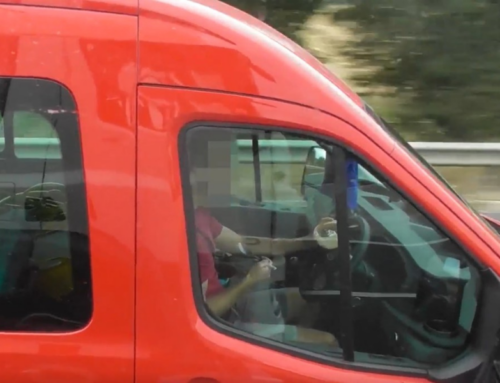Make reducing fleet maintenance costs your New Year Resolution
Happy New Year to everyone in the Driving for Better Business Network
Many employers still don’t fully realise how much their bottom line can be impacted by poor management of those who drive for work.
If your drivers are involved in collisions then there are the obvious damage repair costs and increases in insurance to worry about. Then there are less obvious costs such as additional management and admin time, replacement vehicles and staff absence which generally add up to more than four times the repair costs.
But let’s assume your drivers your drivers don’t have many collisions – might you be tempted to think its not worth bothering with?
The cost of poor driving can still have a significant impact on your fleet running costs and the potential safety of your drivers and other road users even when your drivers don’t appear to be damaging your vehicles. Unnecessary speeding, overly harsh braking and accelerating, and harsh cornering can all add significantly to your vehicle maintenance and fuel costs.
In the case study for DfBB Business Champion Iron Mountain, improving the driver behaviour in all these areas using data from their telematics system, maintenance costs on their van fleet was reduced by fully 30% and fuel costs reduced by 7%.
In a whitepaper produced in September last year, DriveTech, the driver training organisation owned by the AA, looked at data from the AA’s own roadside recovery fleet and investigated exactly what links could be made between poor driving, costs and collisions.
The results were unambiguous – heavy acceleration and braking, overrevving and harsh cornering had a clear and significant impact on both risk and cost.
It clearly indicated which drivers were more likely to have a crash in future, even if they hadn’t had one in the past, because there was a clear correlation between this behaviour and the likelihood of a crash. Those drivers that had two or more collisions were shown to have used maximum throttle almost twice as often per 100km as those who’d had no collisions.
This knowledge enables employers to put interventions in place reducing risk and cost, and making future incidents much less likely.
These same drivers were also responsible for significantly higher maintenance costs – in some cases almost three times as high – for tyres, brakes, fuel and routine servicing and maintenance.
Download the DriveTech white paper here
If you’d like to find out where you could improve management of your drivers, try our free Driving for Better Business gap analysis.
Arval UK – Updated Champion Case Study
Vehicle leasing and fleet management firm Arval UK, one of our longest-standing Business Champions updated their case study in December, and showed the benefits of not just managing your at work drivers well, but of constant monitoring and improvement.
Compared to 10 years ago, the number of collisions is down by two-thirds which have brought repair costs down by 82% and third-party claims down by 84% over the 2007 figures.
Added together, these savings total more than £180,000 per year over the 2007 figures but that is only part of the story as these don’t include hidden costs.
With the insurance industry calculating that uninsured losses for collisions covering management and admin time in dealing with claims, replacement vehicle hire and staff absence following a collision are generally between x4 and x32 the cost of vehicle damage, the total financial benefits could actually be many times the £180,000 quoted here.
Clancy Group is our newest Business Champion
Clancy Group, parent company of construction contractor Clancy Docwra, has become the latest Business Champion for the Driving for Better Business Campaign.
In just 12 months, Colin Knight, Head of Fleet Safety Management & Compliance, has been able to improve driver scoring by 20% with a corresponding reduction in own-fault claims of 20%.
Collision Avoidance Technology – Live in-car demonstrations
Having run two successful days in November with our partners Thatcham Research, Bosch Automotive, Continental Tyres and Volkswagen Commercial Vehicles, we are running two more on the 20th and 21st March.
The latest collision avoidance technology can protect your drivers, prevent vehicle damage and reduce fuel use. Autonomous Emergency Braking, for example, has been proven to reduce ‘at fault’ rear collisions by up to 38%, and third party injury claims by up to 45%.
These events give you probably the only opportunity to experience the latest driver safety systems yourself, driving in a controlled environment, and in the care of highly trained instructors and engineers.





